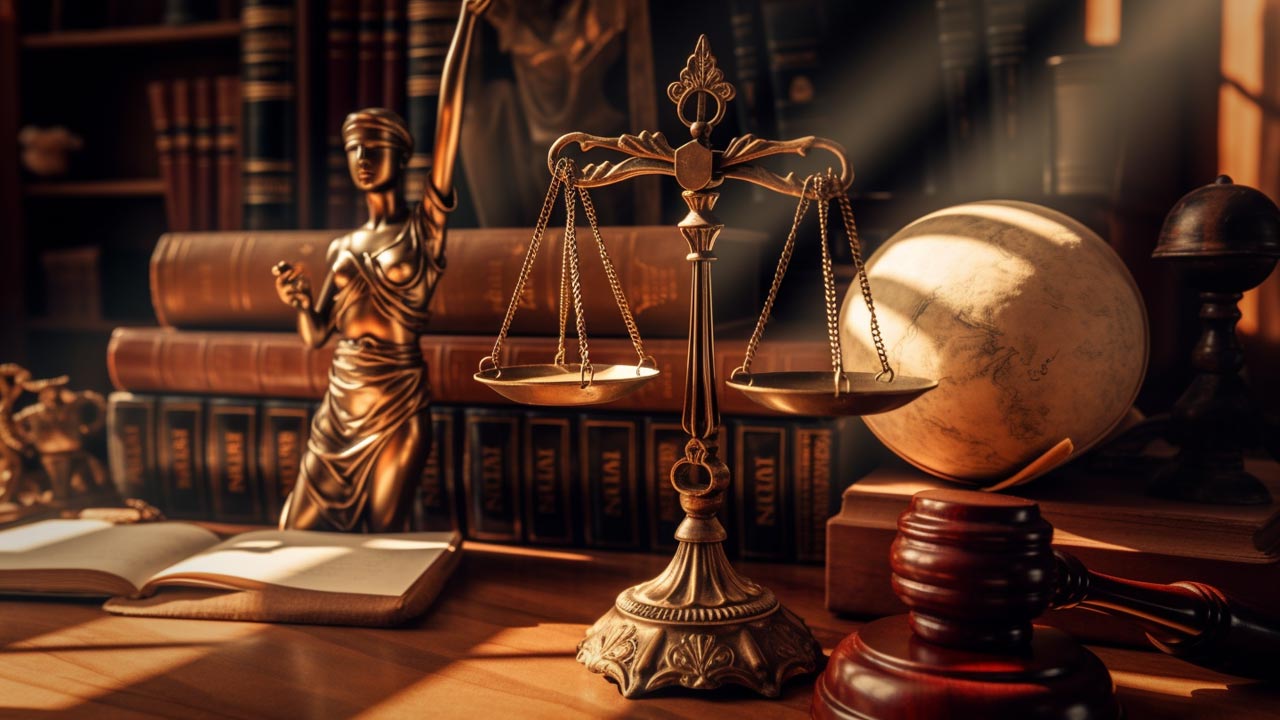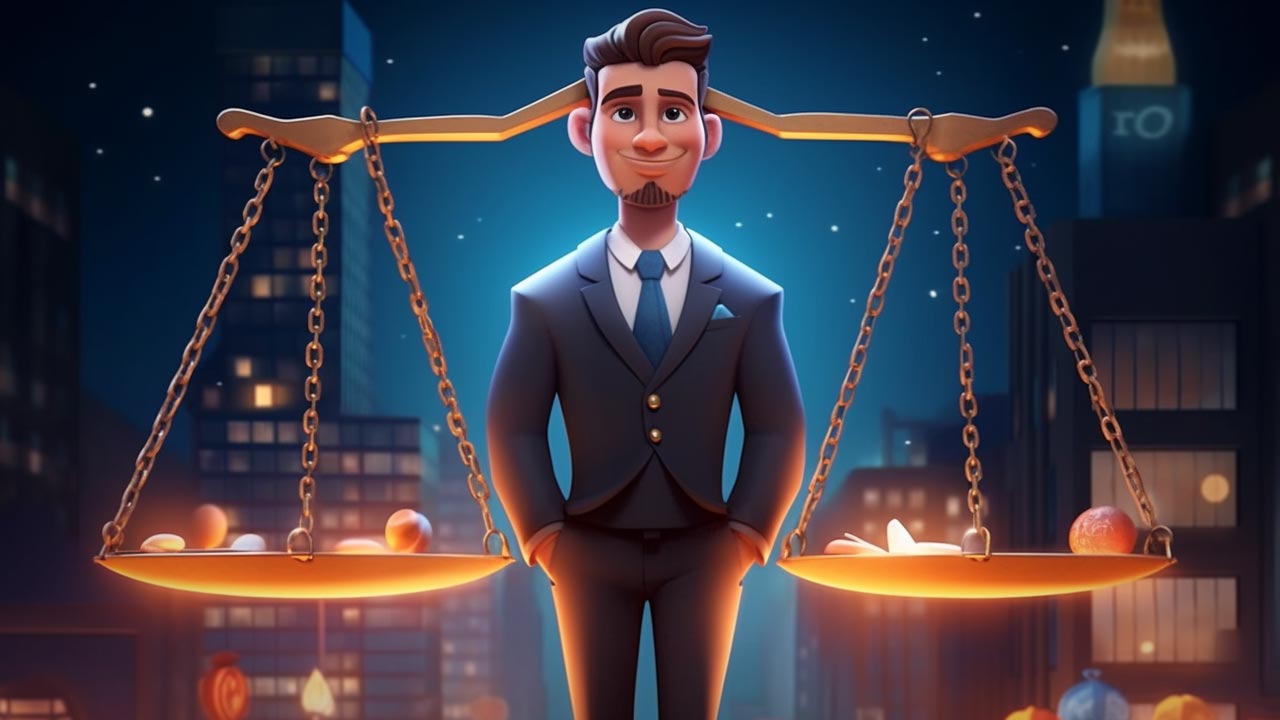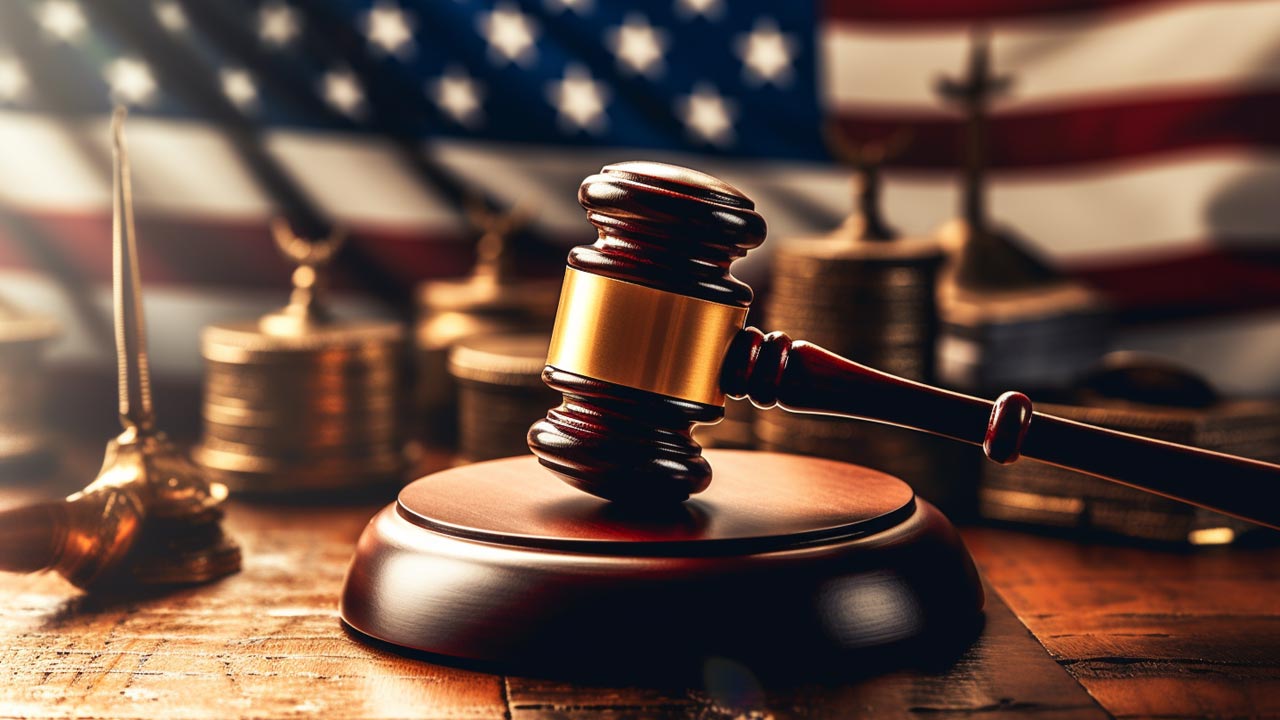Table of Contents
- Introduction
- Definitions and Differences
- Significance of Intellectual Property Laws
- Copyright Laws: A Deep Dive
- Protecting Your Intellectual Property
- Final Thoughts
- Sources
Introduction
The digital revolution, technology’s relentless march, and the vast expanse of the Internet have blurred borders, merged cultures, and, most significantly, have become fertile grounds for creativity and innovation. Amidst this dynamic, ever-changing landscape, a silent, often overlooked guardian stands firm, ensuring that the brilliance of human intellect receives its due recognition and protection. This guardian is the body of laws we call “Intellectual Property (IP) Laws”, under which copyright is a key pillar.
The notion of intellectual property and copyright might seem abstruse, shrouded in complex legal terminology and intricate concepts. The labyrinth of these laws, however, is not a quagmire designed to confound but a well-structured system, fine-tuned over centuries, to strike a delicate balance between public and private interests. Intellectual property laws protect the rights of creators, inventors, and businesses, while also fostering an environment that encourages creativity, innovation, and economic growth.
In this article, we will embark on an exploratory journey into the world of intellectual property and copyright laws. We will delve into the complexities of these laws, shed light on their practical implications, and unravel their inherent intricacies. We will investigate the definitions and differences between various forms of intellectual property, with a deep dive into the realm of copyright laws. We will also explore the significance of these laws, and why they hold such a pivotal role in our society and economy.
Equipped with this understanding, we will then provide you with the tools to navigate these laws and protect your intellectual property. We will illustrate the steps you can take to safeguard your creations, from understanding your rights to seeking registration and legal assistance. We will also explore the process of enforcing your rights and the mechanisms for seeking international protection.
This article aims to empower you with a comprehensive understanding of intellectual property and copyright laws. Whether you are an artist seeking to protect your creative work, a business owner safeguarding your brand, or an inventor patenting a novel invention, this exploration will provide you with the knowledge and insight you need to navigate this intricate legal landscape.
Let’s get to the intricate dance, weaving through the realities of protecting intellectual creations while fostering innovation, it’s a critical component of our modern, knowledge-based economy.
Let’s begin.
The Complexities and Necessities of IP
Unraveling the labyrinthine intricacies of intellectual property (IP) laws might appear an arduous task, akin to a journey through a tangled web spun by legal minds across centuries. Yet, as we embark upon this expedition, we find that these laws, complex as they are, are vital pillars supporting the edifice of modern society and the global economy.
The intellectual property realm is vast, encompassing a multitude of spheres. It stretches from the artistry of a novelist pouring their soul onto pages, to the genius of a scientist illuminating the world with a new discovery. The underlying premise is simple yet profound: safeguarding the fruits of human intellect, and providing individuals with the rights to their creations and inventions.
However, the complexities arise from the multifaceted nature of human innovation itself. How does one measure the originality of an idea? How far should the boundaries of an individual’s claim extend? These questions incite a myriad of debates, the answers to which mold and shape the IP laws.
For instance, consider patents, which protect innovations, allowing inventors exclusive rights to their inventions for a limited period. However, the intricate process of patent application and approval, which includes a detailed examination of novelty, non-obviousness, and utility, exemplifies the inherent complexity of IP law.
Similarly, copyright law, designed to protect original works of authorship, navigates the nuanced distinction between idea and expression. While copyright protects the particular expression of an idea, it doesn’t protect the underlying idea or concept. Hence, one can write a new detective novel without infringing on the copyright of Agatha Christie, but directly copying passages from her book would be an infringement.
Despite these complexities, the necessity of IP laws is undeniable. They provide a legal framework that encourages innovation, fosters economic growth, safeguards consumer interests, and preserves cultural heritage. By protecting creators and inventors, IP laws incentivize the creation of a wide variety of goods and services, enriching our lives and propelling society forward.
As we delve deeper into this fascinating world of IP, we unravel not just its complexities, but also its indispensable role in our world. Grasping the essence of IP laws is not merely an intellectual exercise; it’s a key to understanding the dynamics of the modern world.
A Brief Overview of Copyright and IP Laws
As we embark on this exploration, it’s crucial to lay down the groundwork with a brief overview of copyright and intellectual property (IP) laws.
The intellectual property umbrella encompasses four primary branches, each designed to protect a different form of creation or innovation:
- Patents shield inventions, novel processes, and innovative methods.
- Trademarks safeguard brands, logos, and symbols associated with goods or services, protecting a company’s identity in the marketplace.
- Copyrights protect original works of authorship, including literature, music, and art.
- Trade secrets encompass confidential business information that provides a competitive edge.
These distinct forms of IP each serve a unique purpose and are governed by their own set of laws and regulations.
Copyright is perhaps one of the most pervasive forms of IP, considering the wide array of creative works it protects. Established under the principle of promoting the progress of arts and sciences, copyright laws grant creators exclusive rights over their works. This exclusivity allows authors to control how their work is used, reproduced, and disseminated, and to reap financial benefits from their creations.
However, copyright laws also recognize the need for public access to these works for the purpose of education, research, and cultural development. Hence, they provide for exceptions and limitations, such as fair use, which permit limited usage of copyrighted works without the owner’s permission.
Intellectual property laws, on the other hand, cover a broader spectrum. They protect not just artistic creations but also inventions, brand identities, and trade secrets. The primary purpose of IP laws is to foster an environment that encourages innovation and creativity. By granting exclusive rights, these laws provide incentives for individuals and companies to create and invent, secure in the knowledge that they will be able to benefit from their inventions and creations.
It’s also important to note that IP laws provide a framework for dispute resolution. If an individual or business believes their intellectual property rights have been violated, these laws provide avenues for seeking redress, including legal action and remedies such as damages or injunctions.
In the globalized world, these laws have extended beyond national borders, with international agreements and treaties providing a framework for cross-border IP protection. Institutions such as the World Intellectual Property Organization (WIPO) and agreements like the Agreement on Trade-Related Aspects of Intellectual Property Rights (TRIPS) facilitate international cooperation in the protection of intellectual property.
This brief overview serves as a primer for our deep dive into the complexities of copyright and IP laws. As we progress, we’ll explore these concepts in greater depth, shedding light on the nuances that make this field of law so fascinating and essential.

Definitions and Differences
In the world of intellectual property, four primary categories stand out: patents, trademarks, copyrights, and trade secrets. Each category is distinct in its purpose, and they all serve to protect different aspects of intellectual creation.
Patents
Patents offer exclusive rights to an inventor for a certain period, generally 20 years from the filing date, for a new and useful process, machine, manufacture, or composition of matter. This protection essentially grants the patent holder a temporary monopoly on the usage and commercialization of their invention.
- Utility Patents are given to new and useful processes, machines, manufactures, or compositions of matter.
- Design Patents protect new, original, and ornamental designs for an article of manufacture.
- Plant Patents are granted to anyone who invents or discovers and asexually reproduces any distinct and new variety of plant.
Trademarks
Trademarks serve to protect the symbols, names, and slogans used to identify and distinguish goods and services. Their primary purpose is to prevent confusion in the marketplace, ensuring that consumers can easily identify the source of a product or service.
- Service Marks are similar to trademarks but identify and distinguish the source of a service rather than goods.
- Collective Marks are used by members of a cooperative, association, or other collective group or organization.
- Certification Marks signify that the goods or services on which the mark is used meet certain standards.
Copyrights
Copyrights offer protection to original works of authorship, such as books, music, film, and art. The copyright owner has the exclusive right to reproduce the work, prepare derivative works, distribute copies, and perform or display the work publicly.
- Literary Works include novels, poems, plays, reference works, newspapers, and computer programs.
- Artistic Works include paintings, drawings, photographs, and sculpture, as well as graphic, textile, and architectural designs.
- Musical Works include songs, operas, symphonies, and other musical compositions.
- Dramatic Works include plays, screenplays, and television scripts.
Trade Secrets
Trade secrets refer to confidential business information that provides an enterprise a competitive edge. This could include a range of information, such as manufacturing or industrial secrets and commercial secrets. The unauthorized use of such information by persons other than the holder is regarded as an unfair practice and a violation of the trade secret.
- Manufacturing or Industrial Secrets may encompass a unique method of creating a product or a process.
- Commercial Secrets could include specific aspects such as sales methods, distribution methods, consumer profiles, advertising strategies, and supplier lists.
As we navigate through the intricacies of intellectual property laws, understanding these definitions and distinctions is paramount. Each category is designed to protect a different aspect of creation and innovation, setting the stage for a flourishing intellectual environment.
Significance of Intellectual Property Laws
Intellectual property (IP) laws play a critical role in fostering innovation, encouraging economic growth, and protecting creators and consumers alike. The significance of these laws extends beyond mere legal jargon, influencing the very fabric of our society and economy.
Encouraging Innovation
Perhaps the most apparent function of intellectual property laws is to incentivize creativity and innovation. By granting creators exclusive rights to their inventions or creations, these laws provide a financial incentive for further innovation.
Imagine a world where anyone could freely copy and profit from your hard work without any legal repercussions. It wouldn’t be long before individuals and businesses alike would lose the motivation to create or innovate. IP laws, therefore, provide a safety net for creators and inventors, ensuring that they can benefit from their ingenuity and labor.
Further, these laws also promote progress in society by encouraging disclosure of innovation. For example, patent law requires the inventor to fully disclose the invention in exchange for patent rights. This enables other inventors to learn from existing innovations and subsequently build upon them, thus accelerating the pace of technological advancement.
Economic Growth
IP rights also have a profound impact on economic growth. They foster a competitive environment, stimulate investment in research and development, and encourage the diffusion of knowledge and technology.
IP-intensive industries are often found to be associated with higher economic performance. They contribute significantly to GDP, employment, and trade. The certainty provided by IP laws encourages businesses to invest in new product development and research. This, in turn, leads to the creation of new industries and jobs, and the improvement of existing products and services.
Consumer Protection
IP laws also play a vital role in protecting consumers. Trademark laws, in particular, are instrumental in this regard. They prevent consumer confusion by ensuring that businesses cannot use deceptive branding or packaging to trick consumers into buying their products. By doing so, these laws help maintain trust and integrity in the marketplace.
Cultural Preservation
Intellectual property laws also aid in cultural preservation and development. Artists, musicians, authors, and other cultural practitioners rely on copyright protection to control and benefit from their work. This helps to ensure the viability of cultural industries and the continuation of cultural production.
In conclusion, the significance of intellectual property laws extends far beyond the realm of law. It is intricately woven into the fabric of our society and economy, underpinning innovation, economic growth, consumer protection, and cultural preservation.

Copyright Laws: A Deep Dive
Copyright laws, a key component of intellectual property rights, provide protection for original works of authorship. This can encompass a broad spectrum of works, from books, music, and films, to software, architecture, and more. The complex tapestry of these laws, both in their scope and exceptions, forms an essential backdrop to the creative economy.
The Scope of Copyright
Copyright protection extends to both published and unpublished works, subsisting from the moment of creation when the work is fixed in a tangible medium of expression. This means that as soon as a poem is written, a song is recorded, or a painting is finished, copyright protection is in place.
Importantly, copyright does not protect ideas, facts, or procedures, but only the unique way in which these elements are expressed. This principle, known as the idea-expression dichotomy, is central to copyright law.
The copyright owner has the exclusive right to:
- Reproduce the work
- Prepare derivative works based upon the work
- Distribute copies of the work to the public by sale or other transfer of ownership
- Perform the work publicly (in the case of literary, musical, dramatic, and choreographic works, pantomimes, and motion pictures and other audiovisual works)
- Display the work publicly (in the case of literary, musical, dramatic, and choreographic works, pantomimes, and pictorial, graphic, or sculptural works, including the individual images of a motion picture or other audiovisual work).
Exceptions and Limitations
While copyright laws offer robust protection for creators, they also incorporate certain exceptions and limitations to balance the interests of the general public. These exceptions allow for the use of copyrighted works under specific circumstances without the need for permission from the copyright holder.
One prominent exception is the doctrine of “fair use,” which permits limited use of copyrighted material without permission from the owner under certain circumstances. These circumstances can include criticism, comment, news reporting, teaching, scholarship, or research.
Four factors are considered in determining whether a use constitutes fair use:
- The purpose and character of the use, including whether such use is of commercial nature or is for nonprofit educational purposes
- The nature of the copyrighted work
- The amount and substantiality of the portion used in relation to the copyrighted work as a whole
- The effect of the use upon the potential market for, or value of, the copyrighted work.
International Protection Copyright
Copyright laws also have an international dimension. Numerous international treaties and conventions, such as the Berne Convention and the World Intellectual Property Organization (WIPO) Copyright Treaty, set minimum standards for copyright protection that all member countries must meet.
In conclusion, copyright laws play a pivotal role in protecting original works of authorship. They promote creativity, provide creators with a means to earn a living from their works, and balance these rights with public interest considerations.
Protecting Your Intellectual Property
As creators, inventors, or innovators, it is crucial to understand how to protect your intellectual property (IP). After all, these assets often represent significant value and competitive advantage. Safeguarding your IP involves a combination of legal mechanisms, practical steps, and an ongoing commitment to monitoring and enforcing your rights.
Understanding Your Rights
The first step in protecting your IP is to understand what rights you have. This will depend on the type of IP involved. For instance, if you have created a unique product, you might consider obtaining a patent. If you’ve written a book, you’re automatically covered by copyright laws. For a business, your brand name and logo could be protected by a trademark.
Registration
While copyright protection is automatic, other forms of IP require registration.
- Patents – To protect an invention, you will need to apply for a patent with the relevant governmental body, such as the United States Patent and Trademark Office (USPTO) in the United States.
- Trademarks – Registering a trademark can help protect your brand. This process involves proving that your mark is distinctive and does not infringe on existing trademarks.
- Trade Secrets – While trade secrets do not require registration, businesses should take measures to keep such information confidential. This could involve non-disclosure agreements, employee training, and secure storage practices.
Legal Assistance
Given the complexity of IP laws, you might consider seeking legal assistance. Intellectual property attorneys can help you understand your rights, assist with the registration process, and provide advice on enforcement.
Monitoring and Enforcement
Protecting your IP doesn’t end with understanding your rights or registering your IP. You should actively monitor for potential infringements and be prepared to enforce your rights when necessary. This can involve sending cease and desist letters, filing lawsuits, or negotiating settlements.
International Protection IP
Remember that IP rights are typically territorial, meaning they only provide protection in the countries where they are granted or registered. If you do business internationally, you might need to apply for IP protection in each country where you seek protection.
In conclusion, protecting your intellectual property is a vital task for any creator or innovator. With a thorough understanding of your rights, appropriate registration, legal advice, and active monitoring and enforcement, you can ensure that your valuable IP is well-protected.

Final Thoughts
In the swirling vortex of today’s fast-paced digital age, intellectual property (IP) rights and copyright laws have never been more pertinent. For creators, innovators, and businesses alike, understanding these laws is crucial to protect their hard-earned work, maintain competitive advantage, and foster ongoing innovation.
The intricate web of IP laws, although may seem daunting at first, serves as a powerful shield safeguarding the fruits of intellectual labor. It’s through the prism of patents, copyrights, trademarks, and trade secrets that we enable the dance of creativity and invention, allowing us to stand on the shoulders of giants and reach for the stars.
In a world increasingly driven by knowledge and creativity, these laws will continue to influence the course of innovation, shape economies, and impact societies. As such, there is a pressing need for individuals, businesses, and policymakers to understand, adapt, and navigate these laws efficiently and effectively.
As we conclude, remember that the protection of your intellectual property doesn’t merely end at understanding these laws or registering your assets. It’s a continuous process that requires active monitoring, enforcement, and updating as per the changes in laws, markets, and technologies.
Whether you are an artist, a writer, an inventor, or an entrepreneur, the realm of intellectual property is your playground. So, tread wisely, protect your creations, and let the world marvel at the wonders of your imagination and intellect.
This journey through the landscape of copyright and intellectual property laws is a testament to the power of creativity and the structures in place to protect it. Armed with this knowledge, we can confidently step into a world where innovation is cherished, and creativity flourishes.
References/Sources
- World Intellectual Property Organization (WIPO). What is Intellectual Property?
- United States Patent and Trademark Office. Types of Patents
- United States Copyright Office. Copyright Basics
- United States Patent and Trademark Office. Trademark, Patent, or Copyright?
- Cornell Law School, Legal Information Institute. Intellectual Property
- World Trade Organization. TRIPS: Agreement on Trade-Related Aspects of Intellectual Property Rights
- World Intellectual Property Organization (WIPO). Berne Convention
- World Intellectual Property Organization (WIPO). Importance of Intellectual Property
- European Union Intellectual Property Office. Benefits of Intellectual Property
- U.S. Chamber of Commerce. The Roots of Innovation: U.S. Chamber International IP Index
- United States Patent and Trademark Office. Protecting Your Intellectual Property









Leave A Comment